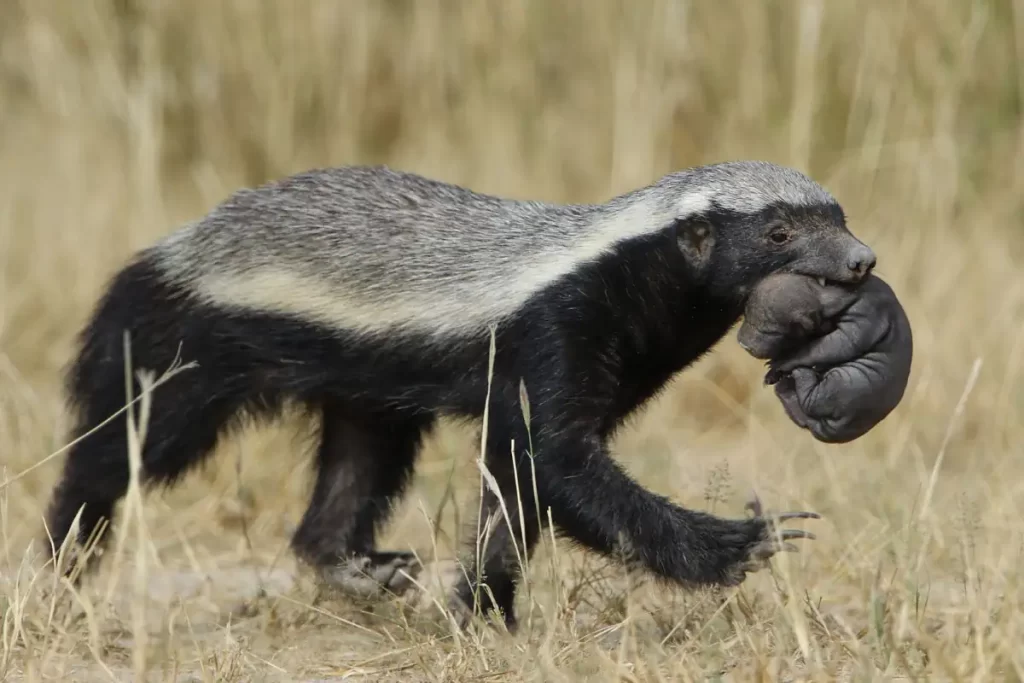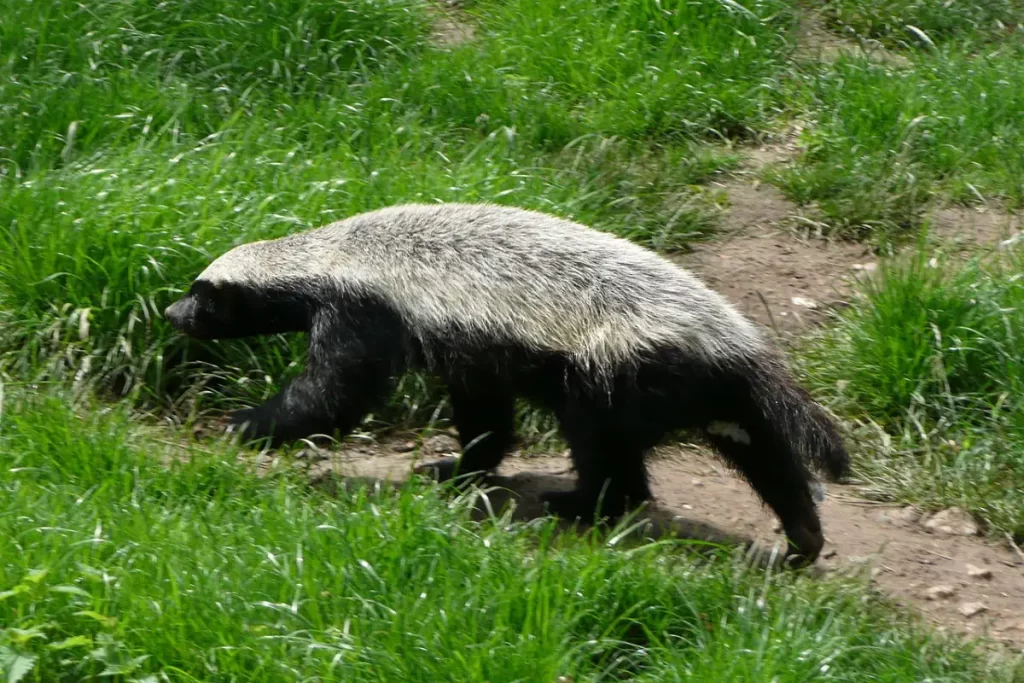Honey badger (scientific name: Mellivora capensis), also known as ratel has a well-earned reputation of being a very fierce, feisty, and brave little mammal. Although barely a foot (30.5 cm) tall, they have a reputation for attacking just about anything – from venomous snakes to full-grown lions. Here are 10 amazing honey badger facts.
1. Honey badger gets its name from its passion for honey
One of its favorite things is to eat honey, and for this, there are no obstacles that it can not overcome. It’s a very ambitious animal when it comes to getting what it wants.
It does not hesitate at all when attacking the hives of poisonous bees, because it trusts the thickness of its skin. Due to the thickness of its skin, it is not affected by bees stinging it.
2. They can eat virtually anything
Honey badgers are omnivorous.
They eat virtually anything – honey, larvae, insects, frogs, tortoises, turtles, lizards, rodents, snakes, birds, and eggs. They also eat berries, roots, vegetables, and bulbs.
Honey badgers also scavenge, and they have even been observed to chase away lion cubs from kills.
Thanks to the immunity it develops to the venoms of snakes, the snake also takes its place among their food.
3. They can use tools!
The honey badger is not only fearless but also astonishingly clever. Compared to their small size, their brains are remarkably big. They are one of the few non-primate species observed to use tools.
They can use materials such as rakes, shovels, stones, and mud to escape from the place they are in. See the amazing video below! After getting mauled by a lion, his caretaker tries to get Stoffel the honey badger under control. But, despite efforts, every time Stoffel finds a clever way to escape.
4. They are found in groups only when they mate
Honey badgers are solitary animals. They can be found in groups only when they mate. After mating, they continue to hang out alone.
Pregnancy lasts about 6 months. They usually give birth to 1-2 cubs. Newborns are born blind.
Mother honey badger constantly changes the location of her cubs to prevent they are being attacked by any predators.

5. Their skin and feathers are quite thick
Thanks to this, they can withstand the attacks of other predators, even attacks from full-grown lions.
Although their skin is thick, they have a fairly loose structure. So they can very comfortably turn to the side they want. This is one of the most important reasons that allows them to be agile.
Their tails are covered with hairs and are short. In the same way, this situation allows them to easily get rid of attacks.
6. They are as big as a small-to-medium-size dog
Adult honey badgers measure 23 to 28 cm (9.1 to 11.0 in) in shoulder height and 55-77 cm (22-30 in) in body length. Their tail adds another 12-30 cm (4.7-11.8 in).
Females are smaller than males. On average, males weigh 9 to 16 kg (20 to 35 lb) while females weigh 5 to 10 kg (11 to 22 lb).
7. Honey badgers are fearless
There’s nothing they are afraid of. Honey badgers observed in their natural habitat have not been observed to be timid towards any animal that comes across them.
As a result of the observations made, it is said that besides the sound that honey badgers make against their opponents, the lion’s roar remains the cat’s meow. The reason for this is that honey badgers do not have a fear hormone.
8. They invade other animals’ nests
Honey badgers, invading the nests of other creatures, constantly change this place, using it as a hotel. Among the animals with which they decoy their nests, there are also pigs and even foxes.
They are such fearless animals that they are said to sleep quite comfortably in these nests, which they invade without caring at all.
9. They have scent glands
There are scent glands under the tail that they can use when they are afraid or want to determine their territory.
Skunks have such scent glands, but they spray smells with these scent glands, while honey badgers release the smell into the environment. The smell they emit is effective for a shorter time compared to skunks.
10. 2004 Guinness book called honey badger “the world’s most fearless animal”
Honey badger, which can be considered as a flaw or mistake of nature, is famous for defying the notorious lion with its fearlessness. This brave animal, with an intelligence greater than its size, is like a mixture of interesting features.
Famous for its struggles with other animals, the honey badger is known as one of the most dangerous members of the animal kingdom, and this was confirmed in 2004 when it entered the Guinness Book of Records.

Some not so-amazing honey badger facts
Honey badgers are widespread and considered abundant. They can be found throughout most of sub-Saharan Africa, Saudi Arabia, Iran, and western Asia. So they are listed as Least Concern on the IUCN Red List. But, they are hunted or persecuted in certain regions, especially when they come into conflict with farmers and beekeepers.
They’re also eaten as bushmeat and their bravery and tenacity make them popular for traditional medicine.
Sources
- Honey Badger Facts on the National Geographic website
- Honey Badger on Wikipedia
- Sloth Facts: 10 Amazing things about these adorable mammals - August 12, 2022
- 10 Amazing Koala Facts - February 18, 2022
- 10 Amazing Humpback Whale Facts - December 22, 2021
